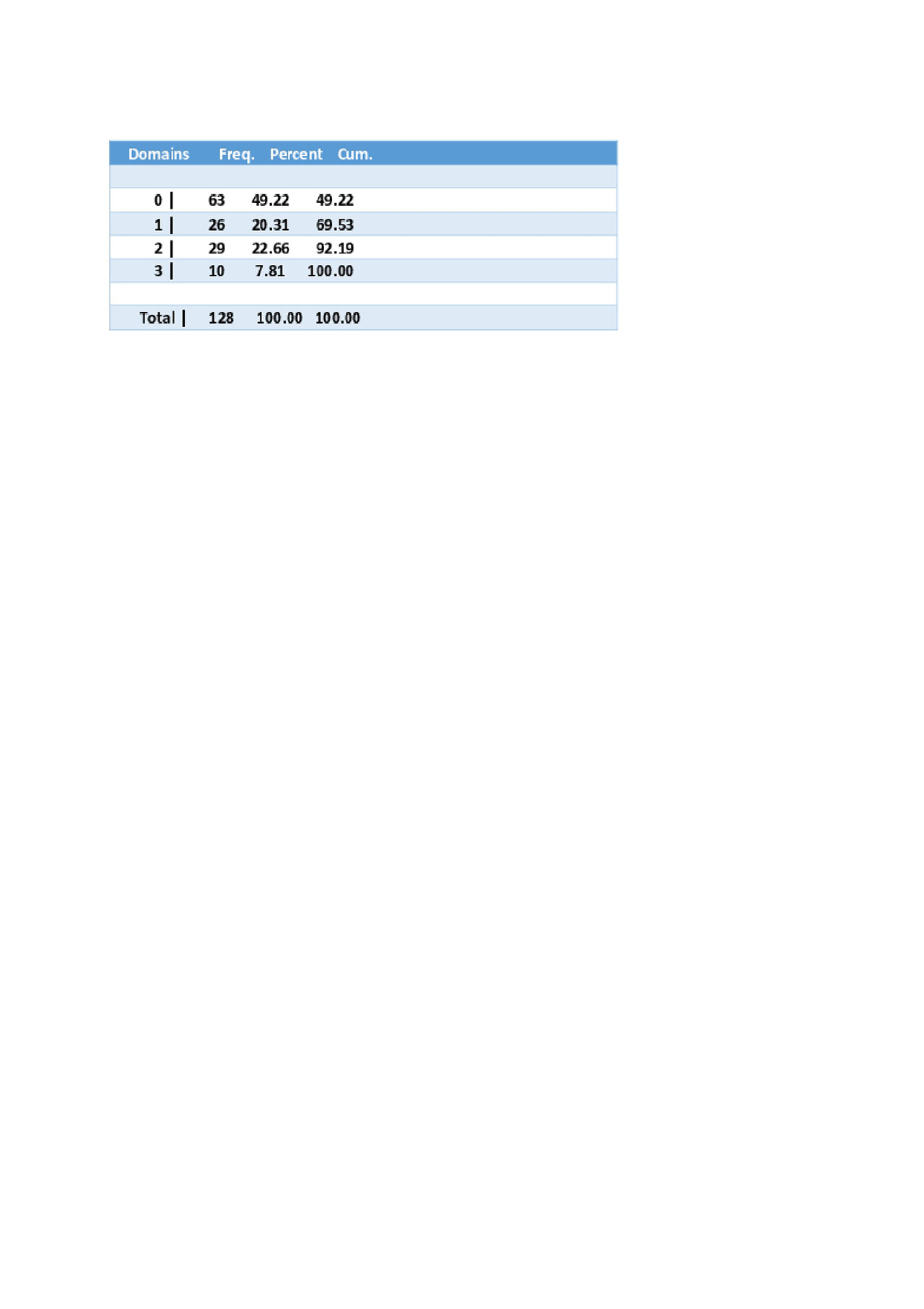Session Information
Session Type: Poster Session (Monday)
Session Time: 9:00AM-11:00AM
Background/Purpose: Burnout among physicians has major implications for health care. We measured prevalence of burnout in a large group of Rheumatology professionals attending a national Rheumatology meeting, using the Maslach Burnout Inventory (MBI)™, and assessed the association of burnout with various professional and personal factors.
Methods: The MBI™, a 22-item questionnaire that includes three domains, emotional exhaustion (EE), depersonalization (DP) and reduced personal accomplishment (PA), was administered to attendees at the Rheumatology Winter Clinical Symposium, in February 2019. 128 attendees completed the MBI™ and a demographics questionnaire. Burnout for each domain was defined as EE≥27, DP≥10 and PA≤33. IRB waiver obtained from Mercy Hospital IRB. Statistical analysis was performed using Stata V 14 (Plano, TX).
Results: Of the 128 respondents, 51% demonstrated burnout in at least one MBI™ domain. 37.5% of all respondents reported EE burnout, 30.5% DP burnout and 21% PA burnout. 20% had burnout in 1 domain only, 22.7% had burnout in any 2 domains, and 7.8% had burnout in all 3 domains (Table). 34.6% of respondents reported not being happy with their EMR. Practitioners unhappy with their EMR were 2.86 times more likely to burnout (OR=2.86 p=0.015, 95% CI: 1.23-6.65). Compared to people who exercise at least once a week, lack of exercise was associated with a 5-fold increase in burnout. (OR=5.00 p= 0.016, 95% CI: 1.3 – 18.5). Work hours more than 60 hours per week was found to be positively associated with burnout (OR=2.6 p= 0.019, 95% CI: 1.16 -5.6) compared to work hours < 60 per week. Compared to other practice types, practitioners in group practice were 57% less likely to burnout (OR=0.43 p=0.029 95% CI: 0.20-0.92 ). Practitioners who spend > 20% of their time in work performing activities they find personally satisfying are 68% less likely to report burnout than people who spend less time (OR=0.32 p=0.005 95% CI: 0.15-0.71 ). Of note, sex, marital status, degree, income and years in clinical practice did not seem to have significant association with burnout in these respondents. There were too few smokers to have any effect. A trend was noted in taking more vacation time (< 3wks), but p-value was not significant (p=0.055). A similar trend toward less burnout in moderate drinkers vs. light drinkers was also noted (p=0.074)
Conclusion: This study confirms the reported high prevalence of physician burnout. The results are in line with the overall reported rate of 54.4% among US physicians showing the deeply pervasive nature of burnout syndrome, even in Rheumatology, which is traditionally considered a “low stress field”.
References:
- Shanafelt TD, Hasan O, Dyrbye LN et al. Changes in burnout and satisfaction with work-life balance in physicians and the general US working population between 2011 and 2014. Mayo Clinic Proceedings. 2015;90(12):1600-1613
To cite this abstract in AMA style:
Tiwari V, Kavanaugh A, Martin G, Bergman M. Prevalence of Burnout in Rheumatology Professionals [abstract]. Arthritis Rheumatol. 2019; 71 (suppl 10). https://acrabstracts.org/abstract/prevalence-of-burnout-in-rheumatology-professionals/. Accessed .« Back to 2019 ACR/ARP Annual Meeting
ACR Meeting Abstracts - https://acrabstracts.org/abstract/prevalence-of-burnout-in-rheumatology-professionals/

